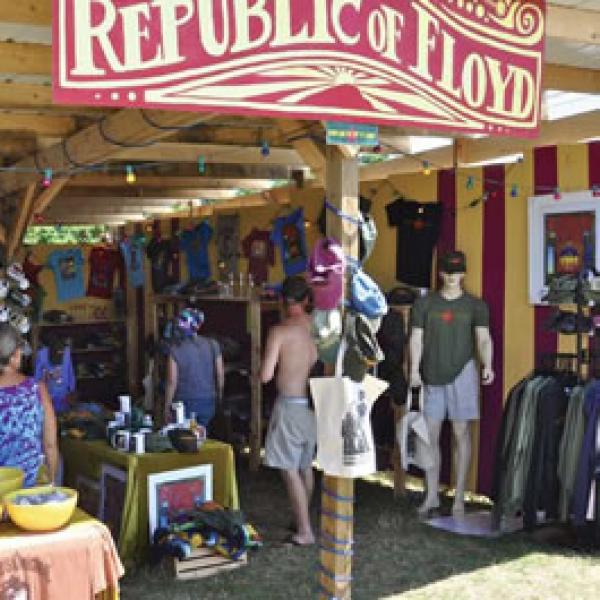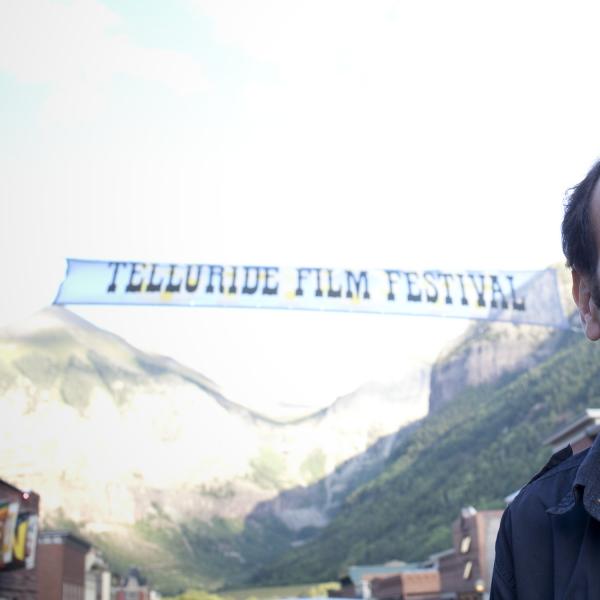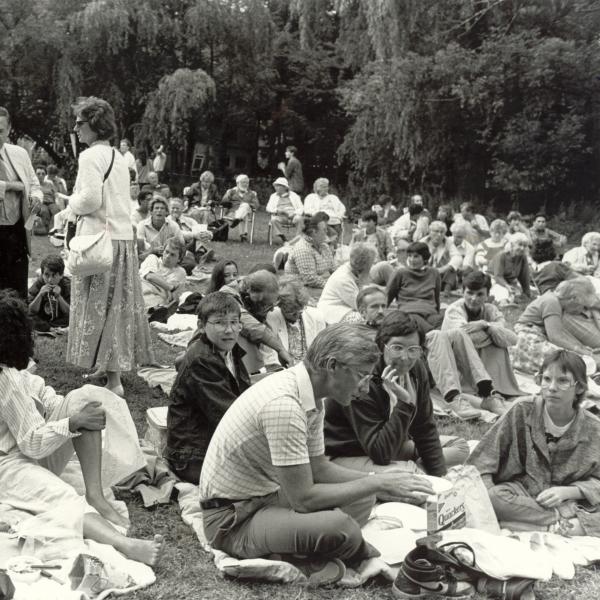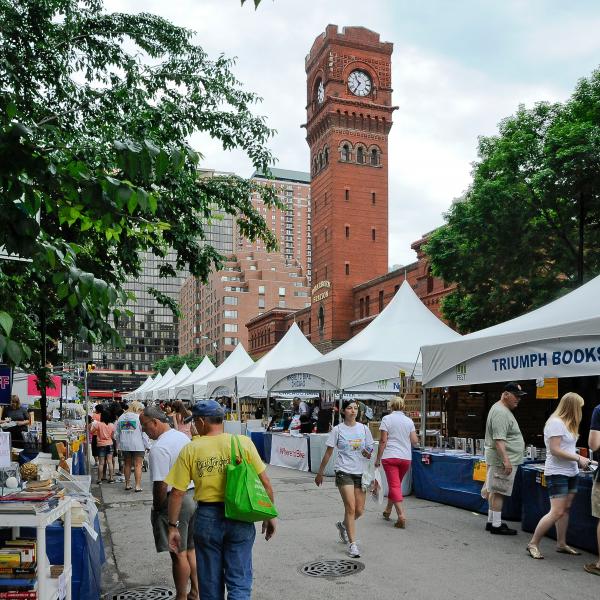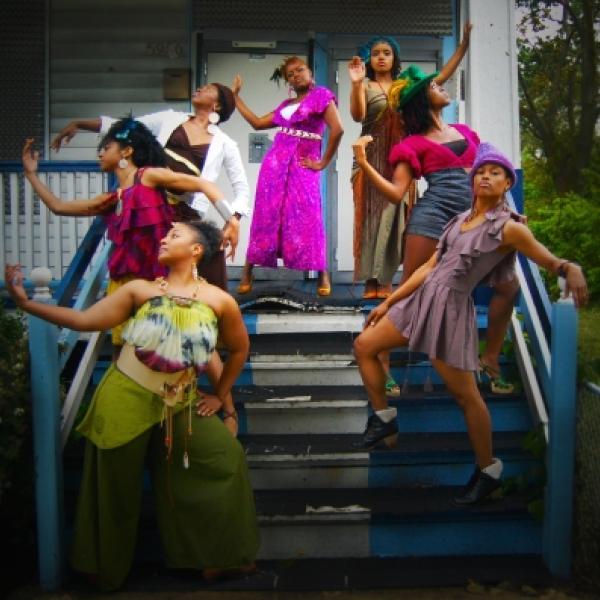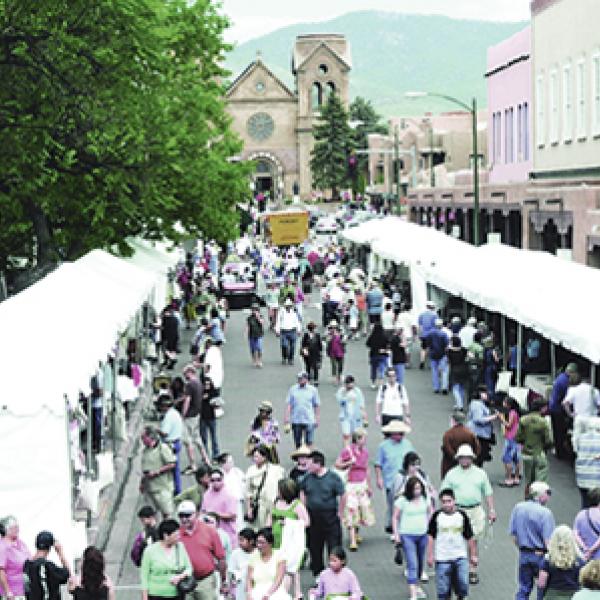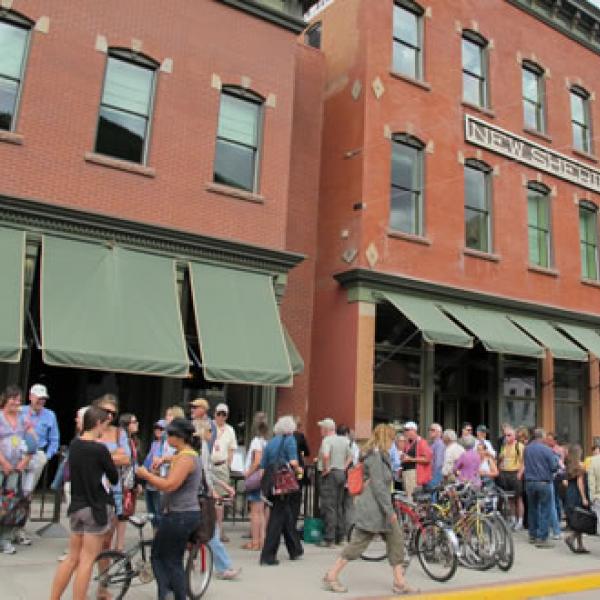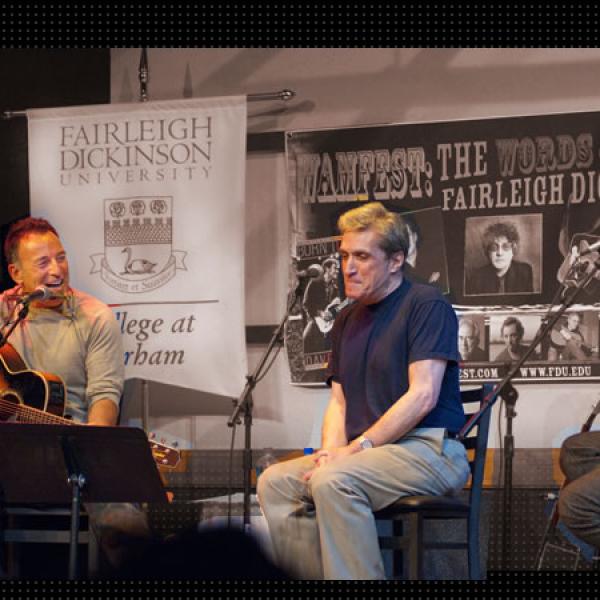A Homegrown Affair
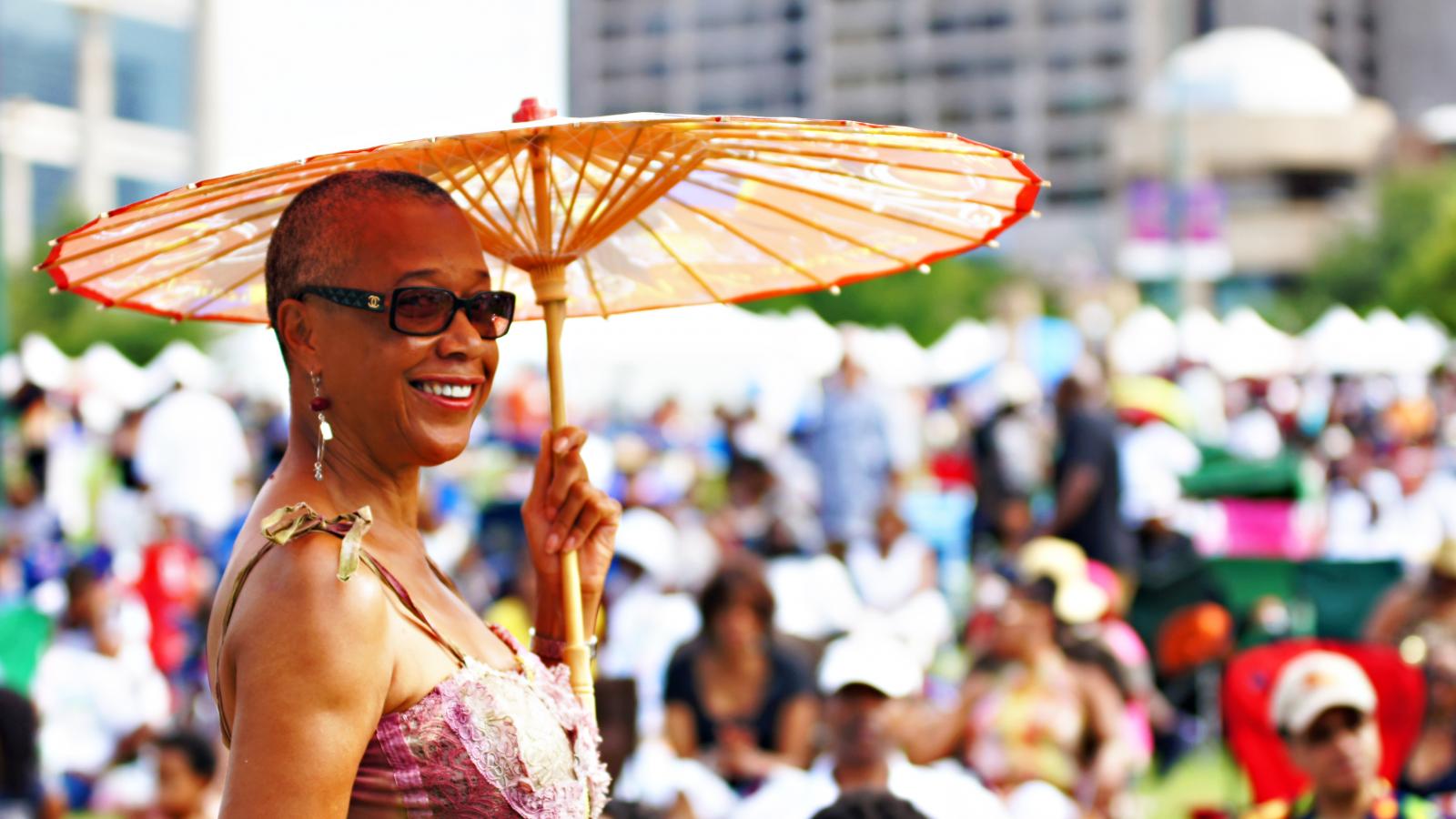
A festival-goer enjoying the 2011 National Black Arts Festival in Atlanta, Georgia. Photo by Sophia Barrett Photography
When Atlanta's first National Black Arts Festival (NBAF) was held in 1988, the city had no Tyler Perry or OutKast. Kenny Leon was just coming into prominence as the new artistic director of the Atlanta Alliance Theater Company, and Usher was just ten years old. While these individuals have today helped make the city a well-known nexus for African-American artists, back in the '80s, persistent racial tensions had left the black artistic community underfunded and underrepresented.
"There was really no place where African Americans could see themselves and celebrate the traditions of our own creative expression," said Dr. Michael Lomax. The current president of the United Negro College Fund, Lomax was the first director of Atlanta's Bureau of Cultural Affairs, which he said was "one of the few spaces in the '70s where black and white came together around a common purpose that had nothing to do with race." In 1978, he was elected to the Fulton County Commission -- whose jurisdiction includes Atlanta -- and formed the Fulton County Arts Council immediately after taking office. One of the council's major initiatives became the launch of a local festival, an idea sparked by Lomax's experience at Bumbershoot, a music and arts festival in Seattle. He wanted to galvanize Atlanta with the same enthusiasm and city pride generated by Bumbershoot, while simultaneously promoting the black artistic experience.
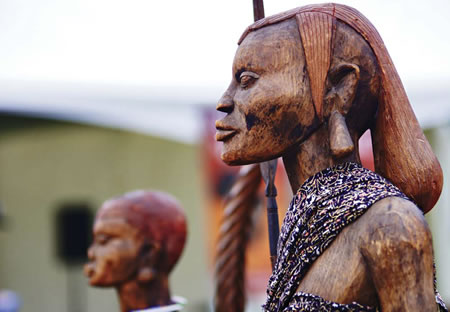
|
"We recognized that there was a kind of uneven growth in institutions," Lomax said. "There were very few that really represented the African-American community.... [There was] a lot of energy, a lot of artistic vitality, but very little funding."
The idea was to hold a biennial ten-day celebration of the African Diaspora. A number of different disciplines would be represented -- film, literature, visual arts, music, dance, and theater -- and events would be held at different sites throughout the city. There would also be a Living Legends award ceremony, which would honor individuals for their contribution to African-American art.
Although this strikes modern ears as entirely benign, the idea of a race-specific festival was initially considered controversial -- even using the word "black" was disputed. "It was counter to everything that we did in the city, which was to usually minimize the importance of race, to say, 'We're going to celebrate the arts through the artistic expression of people of African descent, and we're going to call this unabashedly and unashamedly a black arts festival.'"
Despite early misgivings from some, the first festival, held in July 1988, was an unqualified success. Fifty thousand people were expected; more than 350,000 showed up. Cicely Tyson and Harry Belafonte served as the festival's national spokespeople, Maya Angelou and Amiri Baraka were among the featured participants of the literary component, and a parade was held down Peachtree Street. What was envisioned as a regional festival had quickly taken on national prominence. "The unexpected outcome was that this touched a nerve, and people came from all across the country," Lomax said.
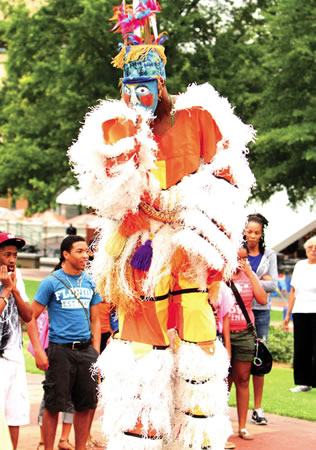
|
Not only did it satisfy an unfulfilled need, but Lomax said it was an important step in changing the perception of Atlanta as an arts city. "A lot of these artists of that generation had been involved in marching with Dr. [Martin Luther] King. They certainly knew Atlanta, and they knew the South, but they knew it as a battleground for human rights," he said. "They knew that the arts, certainly music, had played a powerful role in that liberation struggle. But I don't think they really thought of the South as a place where they could perform as artists for the sake of the art as opposed to for the sake of some social purpose."
That notion is almost unimaginable today. The African-American art scene has exploded in Atlanta, particularly within the music industry. The city is home to Def Jam Recordings -- the label of Jay-Z, Patti LaBelle, Kanye West, and Rihanna, among others -- So So Def Recordings, LaFace Records, and Stankonia, the recording studio founded by OutKast. Then there's the New African Grove Theatre Company, dance organizations such as Ballethnic Company, and the BronzeLens Film Festival of Atlanta.
According to Neil Barclay, current president and CEO of NBAF, this shift in Atlanta's culture has allowed the festival to dramatically expand its scope. Whereas African Americans were once considered a "monolithic" demographic whose members had similar aesthetics, ideas, and backgrounds, today the community's diversity is explored and celebrated. On last summer's festival schedule, featured events included South African boot dancing, a Guinean koraharp band, Afro-Cuban jazz, and an international craft market. A revival of the 1936 production Voodoo Macbeth is currently in the works, thanks in part to a Fiscal Year 2010 NEA grant. The play takes place in 19th-century Haiti, and was originally produced under the WPA's Federal Theater Project.
"Opportunity is before us to now begin to explore the complexity of what we used to think of as just 'black' artists," said Barclay. "[The festival] is something that's much more complex, and, I think, richer because of the influence of people from throughout the globe that live in our community." The festival, in turn, is beginning to spread its own influence internationally: earlier this year, the mayor of Kumasi, a city in south central Ghana, announced plans for a new local festival modeled on NBAF. The Kumasi International Black Arts and Culture Festival will take place from November 11 through 27.
Although it has grown tremendously -- the festival became an annual event in 2003, with an attendance of roughly 300,000 each year, and now has year-round events -- the NBAF remains a homegrown affair. The organization does extensive community outreach, and heavily showcases the work of Atlanta artists at the summer festival. Since its inception, NBAF has helped nurture nascent talent as well, not only by offering exposure of young artists' work, but occasionally through commissions. According to Barclay, artist Radcliffe Bailey, who grew up in Atlanta, received some of his earliest commissions from NBAF to create posters for the festival. This summer, Bailey's solo exhibition, Memory as Medicine, could be seen at Atlanta's High Museum of Art.
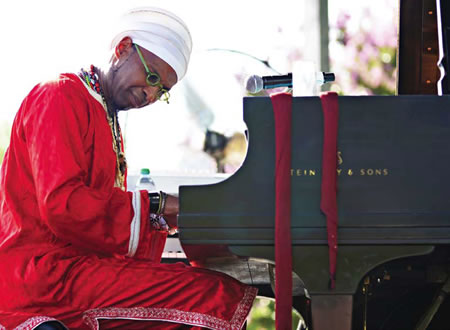
Omar Sosa performs at the 2011 National Black Arts Festival. Photo by Sophia Barrett Photography |
"It's a great moment for the community," said Barclay of Bailey's artistic success. "To see a native son have that kind of visibility in the museum, but also to have seen his work come of age in that way has been particularly exciting. It's like being able to see the fruits of your labor many years later."
Barclay hopes that the festival will continue to inspire and nurture another generation of artists and art lovers. NBAF reaches 25,000 children each year, both through year-round programming and summer festival attendance. "To see [children] turned on to the transformative power of art is always exciting for me," he said. "You imagine it's the moment when they go 'Oh wow, art!' That's something that they'll hopefully make a part of their lives."
No matter age, race, or background, Barclay hopes that attendees will take away "something extraordinary" from the festival. As for Michael Lomax, looking back at the thriving festival he helped create, he offered a simple, authoritative appraisal: "I think we did good."


